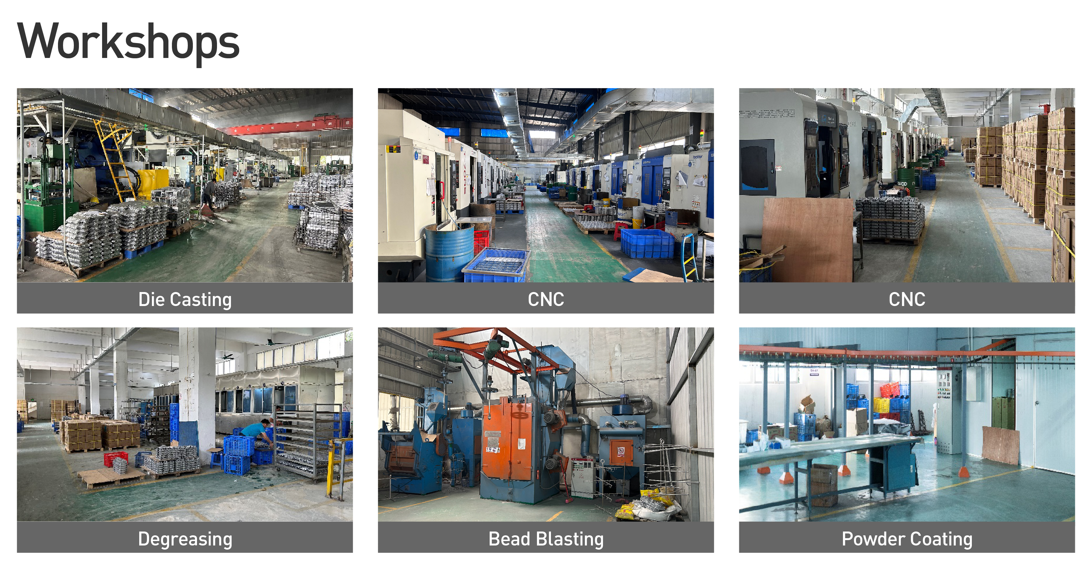What materials are used for creating die cast parts in Kingrun’s factory?
The die casting process can create parts with alloys of the following elements (listed from most common to least):
- Aluminum – Lightweight, high dimensional stability, good corrosion resistance and mechanical properties, high thermal and electrical conductivity, strength at elevated temperatures
- Zinc – Easy to cast, high ductility, high impact strength, easily plated
- Magnesium – Easy to machine, excellent strength-to-weight ratio
- Copper – High hardness and corrosion resistance, high mechanical properties, excellent wear resistance and dimensional stability
What are the advantages of high pressure die casting?
- High Speed Production – Die casting provides complex shapes within closer tolerances than many other mass production processes. Little or no machining is required and hundreds of thousands of identical castings can be produced before additional tooling is required.
- Dimensional Accuracy and Stability – Die casting produces parts that are dimensionally stable and durable, while maintaining close tolerances. Castings are also heat resistant.
- Strength and Weight – The die casting process is suited for thin wall parts, which reduce the weight, while maintaining strength. Also, die casting can incorporate multiple components into one casting, eliminating the need for joining or fasteners. This means that the strength is that of the alloy rather than the joining process.
- Multiple Finishing Techniques – Die cast parts can be produced with a smooth or textured surface, and they are easily plated or finished with minimum or surface preparation.
- Simplified Assembly – Die castings provide integral fastening elements, such as bosses and studs. Holes can be cored and made to tap drill sizes, or external threads can be cast.
Die castings are used in every industry. Some of the industries that use large numbers of die castings are:
- Automotive
- Telecommunications
- Electronics
- Consumer goods
- Aerospace
Here are some aluminum die castings we made include:
- Automotive parts, such as engine blocks, transmission housings, and suspension components
- Electronic components, such as heat sinks, enclosures, and brackets
- Consumer goods, such as kitchen appliances, power tools, and sporting equipment
Post time: May-28-2024












